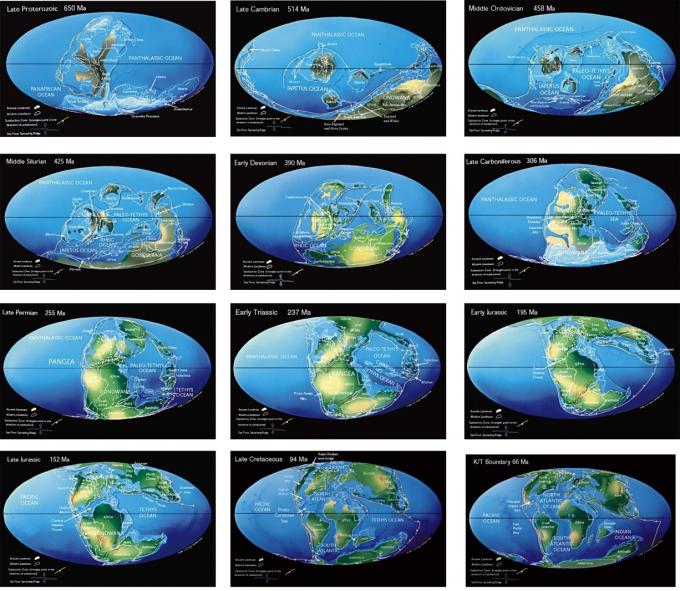Palaeozoic
The Paleozoic or Palaeozoic Era is the earliest of three geologic eras of the Phanerozoic Eon, spanning from roughly 542 to 251 million years ago (ICS, 2004). It is the longest of the Phanerozoic eras, and is subdivided into six geologic periods; from oldest to youngest they are: the Cambrian, Ordovician, Silurian, Devonian, Carboniferous, and Permian.
The Paleozoic was a time of dramatic geological, climatic, and evolutionary change. The Cambrian period witnessed the most rapid and widespread diversification of life in Earth's history, known as the Cambrian explosion, in which most modern phyla first appeared. Fish, arthropods, amphibians and reptiles all evolved during the Paleozoic. Life started out in the ocean but eventually transitioned onto land, and by the late Paleozoic, the land was dominated by various forms of organisms, and great forests of primitive plants covered the continents, forming the coal beds of Europe and eastern North America. By the end of the era, the first large, sophisticated reptiles and the first modern plants, (conifers) had developed.
The Paleozoic Era ended with the largest mass extinction in Earth's history, the Permian-Triassic Extinction Event. The effects of this catastrophe were so devastating that it took life on land 30 million years to recover. Recovery of life in the sea may have been much faster.
Source: http://en.wikipedia.org/wiki/Palaeozoic | ||
Virtual museum of the Czech Geological Survey, www.geology.cz, (C) Czech Geological Survey, 2011, v.0.99 [13.12.2011]


![[ENG]](img/vlajka-cr.gif) Česky
Česky 
